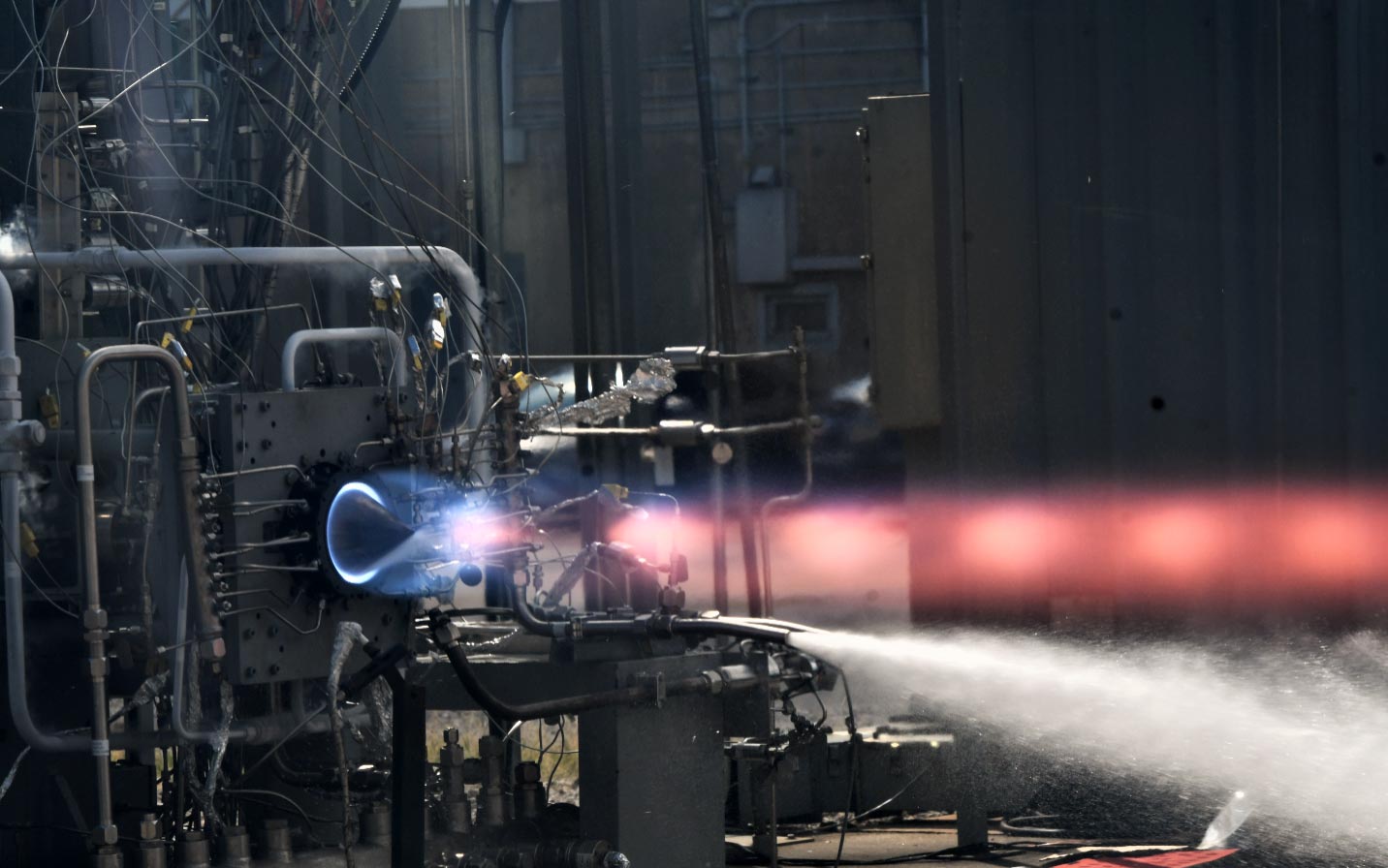NASA proiectează o propulsie revoluționară pentru misiunile în spațiul adânc


Motor de rachetă cu detonare rotativă sau Test de foc fierbinte RDRE la Marshall Space Flight Center. Credit: NASA
ca[{” attribute=””>NASA takes its first steps toward establishing a long-term presence on the Moon’s surface, a team of propulsion development engineers at NASA have developed and tested NASA’s first full-scale rotating detonation rocket engine, or RDRE, an advanced rocket engine design that could significantly change how future propulsion systems are built.
The RDRE differs from a traditional rocket engine by generating thrust using a supersonic combustion phenomenon known as a detonation. This design produces more power while using less fuel than today’s propulsion systems and has the potential to power both human landers and interplanetary vehicles to deep space destinations, such as the Moon and Mars.
ingineri în NASA Marshall Space Flight Center din Huntsville, Alabama, și colaboratorul principal IN Space LLC, cu sediul în West Lafayette, Indiana, confirmă datele din testele RDRE la foc cald efectuate în 2022 la Eastern Marshall Test Area. Motorul a fost pornit de peste o duzină de ori, cu o durată totală de aproape 10 minute.
RDRE și-a atins obiectivul principal de testare demonstrând că dispozitivele sale – realizate cu noi procese de fabricație aditivă sau imprimare 3D, design și procese – pot funcționa pentru perioade îndelungate, rezistând în același timp la mediile extreme de căldură și presiune generate de sablare. Funcționând la accelerație maximă, RDRE a produs peste 4.000 de lire sterline de tracțiune timp de aproximativ un minut la o presiune medie în cameră de 622 psi, cea mai mare presiune nominală pentru acest design.

Motor de rachetă cu detonare rotativă sau Test de foc fierbinte RDRE la Marshall Space Flight Center. Credit: NASA
RDRE include cupru dezvoltat de NASA[{” attribute=””>alloy GRCop-42 with the powder bed fusion additive manufacturing process, allowing the engine to operate under extreme conditions for longer durations without overheating.
Additional milestones achieved during the test include the successful performance of both deep throttling and internal ignition. This successful demonstration brings the technology closer to being used with future flight vehicles, enabling NASA and commercial space to move more payload and mass to deep space destinations, an essential component to making space exploration more sustainable. Because of NASA’s recent success with the RDRE, follow-on work is being conducted by NASA engineers to develop a fully reusable 10,000-pound class RDRE to identify performance benefits over traditional liquid rocket engines.

Thrust propulsion testing and characterization of the University of Central Florida rotating detonation rocket engine is shown in this photo. NASA provided funding for a UCF project focused on rotating detonation rocket engines, which use high-energy explosions to produce more energy with less fuel, improving engine efficiency and cutting down space travel costs and emissions. Credit: UCF
RDRE is managed and funded by the Game Changing Development Program in NASA’s Space Technology Mission Directorate.

„Creator. Amator de cafea. Iubitor de internet. Organizator. Geek de cultură pop. Fan de televiziune. Mândru foodaholic.”
